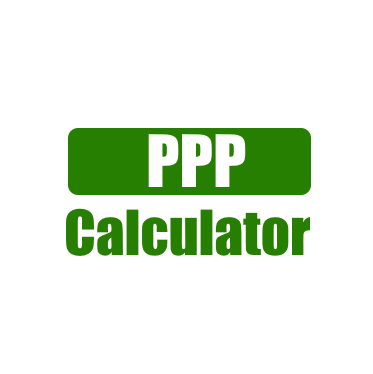
Purchasing Power Parities (FAQs)
Purchasing Power Parities (FAQs)
1. What are PPPs?Purchasing Power Parities (FAQs)
2. How PPPs are determined?
3. What are the significant purposes of PPPs?
4. What are the items remembered for the bin of labor and products utilized for the estimation of PPPs and what number of would they say they are?
5. Where could I at any point download PPP information?
6. How are yearly PPP time series developed?
7. When are PPPs refreshed and modified?
8. Where could I at any point track down philosophy on PPPs?
9. What are the distinctions between PPP for Gross domestic product, PPP for private utilization and PPP for genuine individual utilization?
10. How would I peruse the Similar Cost Level table?

1. What are PPPs?Purchasing Power Parities (FAQs)
PPPs are the paces of cash transformation that adjust the buying force of various monetary forms by disposing of the distinctions in cost levels between nations. In their least complex structure, PPPs are essentially cost family members that show the proportion of the costs in public monetary forms of similar great or administration in various nations. PPPs are additionally determined for item gatherings and for every one of the different degrees of conglomeration up to and including Gross domestic product.
2. How PPPs are determined?Purchasing Power Parities (FAQs)
The estimation is attempted in three phases. The principal stage is at the item level, where value family members are determined for individual labor and products. A straightforward model would be a liter of Coca-Cola. Assuming it costs 2.3 euros in France and 2.00$ in the US then the PPP for Coca-Cola among France and the USA is 2.3/2.00, or 1.15. This intends that for each dollar spent on a liter of Coca-Cola in the USA, 1.15 euros would need to be spent in France to get a similar amount and quality – or, at the end of the day, a similar volume – of Coca-Cola. The subsequent stage is at the item bunch level, where the cost family members determined for the items in the gathering are found the middle value of to acquire unweighted PPPs for the gathering. Coca-cola is for instance remembered for the item bunch “Softdrinks and Concentrates”.
Furthermore, the third stage is at the conglomeration levels, where the PPPs for the item bunches covered by the accumulation level are weighted and found the middle value of to acquire weighted PPPs for the collection level up to Gross domestic product (in our model, amassed levels are Non-cocktails, Food… ). The loads used to total the PPPs in the third stage are the consumptions on the item bunches as laid out in the public records. You will track down point by point data on the computation in the “EUROSTAT-OECD Systemic manual on buying power equalities (PPPs)”, Section 12.
3. What are the significant purposes of PPPs?Purchasing Power Parities (FAQs)
The significant utilization of PPPs is as an initial phase in making between country correlations in genuine terms of total national output (Gross domestic product) and its part uses. Gross domestic product is the total utilized most often to address the financial size of nations and, on a for each capita premise, the monetary prosperity of their occupants. Computing PPPs is the most vital phase during the time spent changing over the degree of Gross domestic product and its significant totals, communicated in public monetary standards, into a typical cash to empower these correlations with be made.There are likewise different purposes and proposals that can be find in subtleties in the EUROSTAT-OECD Systemic manual on buying power equalities (PPPs)”
4. What are the items remembered for the bin of labor and products utilized for the estimation of PPPs and what number of would they say they are?
The crate of labor and products estimated for the PPP practice is an example of all labor and products covered by Gross domestic product. The eventual outcome list covers around 3,000 purchaser labor and products, 30 occupations in government, 200 kinds of hardware merchandise and around 7 development projects. The huge number of items is to empower nations to recognize labor and products which are illustrative of their homegrown uses.
5. Where might I at any point download PPP information?
For OECD nations
PPPs are available by means of the OECD Information Pilgrim:
Yearly PPP time series for GDP (Gross domestic product), families’ real individual utilization and family last utilization).
OECD Itemized benchmark results from 2020 onwards
For European nations
You can find yearly definite PPP results for European Nations on the Eurostat’s site.
For non-European non-OECD nations
The World Bank organizes the Global Examination Program (ICP), a worldwide measurable drive laid out to create universally tantamount cost levels, use values, and Buying Power Equality (PPP) gauges. Eurostat and the OECD are together responsible for the “Eurostat-OECD locale” for the ICP. See ICP information and all connected data.
The World Bank distributes yearly PPP time series On the planet Improvement Markers.
The Global Money related Asset additionally distributes PPP information On the planet Monetary Standpoint.
6. How yearly PPP time series built?
Since December 2016, the OECD has worked on the nature of its yearly PPP time series (1) coordinating study results when they become accessible without hanging tight for the fulfillment of the entire overview cycle at regular intervals, (2) depending on cost deflators at a nitty gritty level for yearly extrapolations, and (3) expanding the recurrence of some reviews (public records’ consumption loads, pay of representatives, lodging rents).
PPPs for Russia determined utilizing uses incorporated the SNA 1993 from 1995 to 2010 and as per the SNA 2008 from 2011.
Note that the OECD philosophy lined up with Eurostat’s procedure, as portrayed in the Eurostat-OECD PPP Manual, Section 13, passage 13.4.1.
7. When PPPs refreshed and reconsidered?
PPPs for a given year T distributed in six stages:
At T+3 months (Walk): first PPP gauges, for Gross domestic product as it were
At T+6 months (June): second PPP gauges, in view of itemized extrapolations, for Gross domestic product, families’ Genuine Individual Utilization (AIC) and Family Last Utilization Consumption (HFCE)
So, likewise T+12 (December) and T+14 months (February): third PPP gauges, consolidating all cost and use information for year T
At T+24 (December) and T+26 months (February): fourth PPP gauges, integrating refreshed use gauges
At T+36 (December) and T+38 months (February): Fifth PPP gauges for year T
PPPs for European nations
In December 2016, PPPs from 1995 to 2012 particularly overhauled for every European country. Additional data on this amendment is accessible on the Eurostat site. PPPs from 1970 to 2012 might changed in December every year to consolidate updates in Public Records’ deflators.
Verifiable time series
More data on verifiable time series is accessible in the accompanying note (PDF).
8. Where might I at any point track down technique on PPPs?
You can track down broad data in the “EUROSTAT-OECD Systemic manual on buying power equalities (PPPs)”. You can likewise find data on the Eurostat site and on the World Bank site.
9. What are the distinctions between PPP for Gross domestic product, PPP for private utilization and PPP for genuine individual utilization?
The PPP for Gross domestic product covers both last utilization use (family and government) and gross capital arrangement. The PPP for genuine individual utilization covers all families utilization consumption and that piece of government last use which covers administrations it supplies to individual families, for instance lodging, wellbeing, instruction, social security and so on … (at the end of the day, it does exclude government last use on those administrations it supplies to family on the whole like safeguard, police, climate insurance …). The PPP for Family Last Utilization (or Confidential Utilization) covers the use by families on individual utilization of labor and products, including those sold at costs that are not financially critical. Assuming you really want more itemized definitions, you can allude to the glossary of the PPP Strategic Manual.
10. How would I peruse the Similar Cost Level table?
Month to month near cost levels characterized as the proportions of PPPs for private last utilization consumption to trade rates and introduced in a configuration of a table. The month to month PPPs used to determine the table are OECD gauges. The table is to in an upward direction perused. Every section shows the quantity of determined financial units required in every one of the nations leaned to purchase. For each situation the delegate bin costs 100 units in the country whose money determined. How about we take a model. To realize the cost level in Canada when contrasted with different nations. You need to take a gander at the segment Canada, where the cost level set at 100.
Assuming you have 120 for Finland, it implies that the cost level in Finland is 20% higher than in Canada. It implies that you would burn through 120 bucks in Finland to purchase similar bushel of labor.



